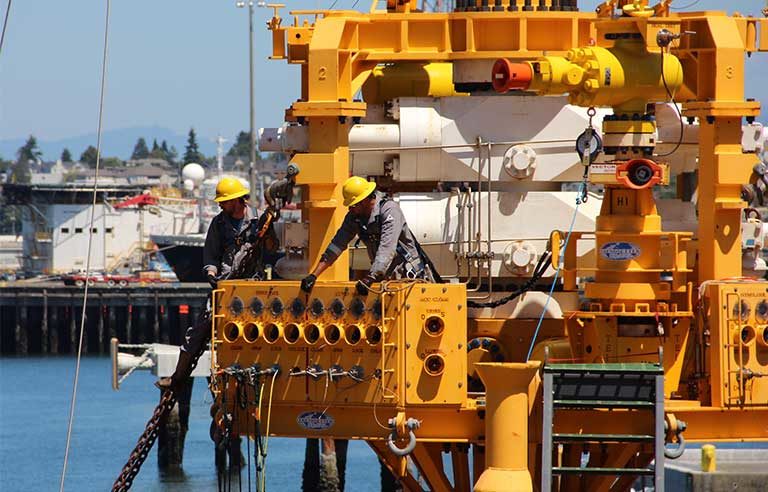Inspection findings spur offshore safety agency recommendations on dropped-object hazards

New Orleans — A recent string of Bureau of Safety and Environmental Enforcement performance-based risk inspections uncovered various hazards related to dropped objects on production and well operations, according to a Sept. 14 safety alert outlining the findings.
BSEE engineers, inspectors, and Safety and Environmental Management System specialists analyzed data stemming from 20 production facility visits made by inspectors between June 1 and 11. The agency found that a majority of the operators lacked specific training requirements to prevent incidents of dropped objects for offshore personnel at their facilities. Additionally, a majority of the facilities hadn’t implemented a dropped object prevention program.
Other findings:
- Although operators followed good barrier management during lifts and with moving equipment present on the rig floor, improvement is needed on lifts not associated with the rig floor and on work above decks.
- All the facilities maintained a management of change program, but no recent MOCs associated with mounting new fixtures to existing structures or equipment exist.
- Multiple gaps are present in the Job Safety Analyses conducted.
In the review and alert, BSEE offers recommendations to operators and contractors, including:
- Review the inspection results and use them as a basis for conducting focused hazard hunts on facilities to reduce the likelihood of incidents.
- Develop a prevention of dropped objects strategy and action plan to identify and assess individual work areas and activities for dropped object potential.
- Establish regular inspection frequencies for identifying any potential dropped objects and record the results within a work order register.
- Develop standalone training requirements for individuals exposed to or undertaking the inspection of potential dropped objects.
- Evaluate all lifting JSAs to ensure they address the control of objects with the potential to fall.
Performance-based risk inspections comprise one component of the risk-based inspection program BSEE introduced in March 2018 in an effort to complement its National Safety Inspection Program. The system assesses data from inspections and incident reports to assign risk-factor scores to production facilities in the Gulf of Mexico.
“Risk-based inspections are a vital component of BSEE’s overall inspection program, ensuring safe and environmentally sustainable operations offshore,” Lars Herbst, director of BSEE’s Gulf of Mexico Region, said in a press release. “These risk-based inspections focus on specific high-risk operations and help reduce the likelihood of future incidents on the Outer Continental Shelf.”
Post a comment to this article
Safety+Health welcomes comments that promote respectful dialogue. Please stay on topic. Comments that contain personal attacks, profanity or abusive language – or those aggressively promoting products or services – will be removed. We reserve the right to determine which comments violate our comment policy. (Anonymous comments are welcome; merely skip the “name” field in the comment box. An email address is required but will not be included with your comment.)

